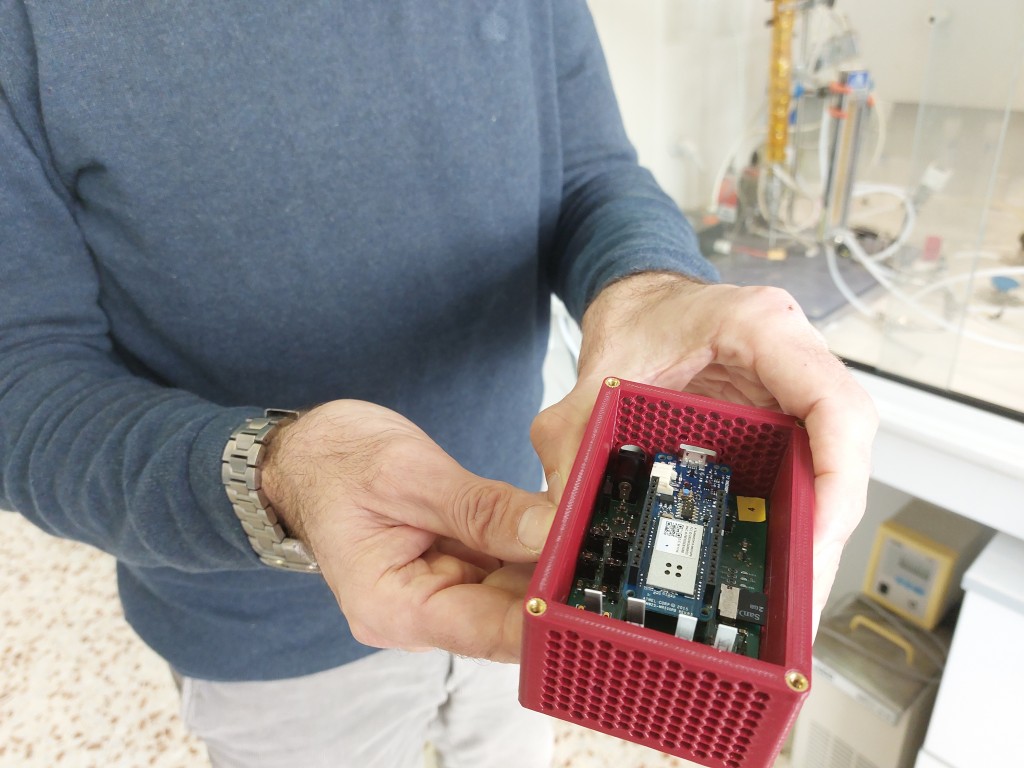11/04/2024
The URV has developed sensors to detect chemical warfare gases in crowded places
Researchers from the Department of Electronic, Electrical and Automatic Engineering have coordinated a project to protect the civilian population against attacks with mustard and nerve gases

Researchers from the Department of Electronic, Electrical and Automatic Engineering have coordinated a project to protect the civilian population against attacks with mustard and nerve gases
An international research project involving the Universitat Rovira i Virgili has successfully achieved its goal of finding ways of protecting the civilian population against possible attacks with chemical warfare gases. The SENSOFT project (Smart Sensing for Rapid Response to Chemical Threats in Soft Targets) has developed systems for detecting chemical compounds, such as mustard gas and nerve gas, in crowded places, such as train stations, airports, shopping malls, theatres and cinemas. The URV, more specifically the MINOS research group (Microsystems Nanotechnologies for Chemical Analysis) of the Department of Electronic, Electrical and Automatic Engineering, has developed the sensors that detect these compounds.
“The initial idea of the project was to seek methods that could respond quickly to a chemical attack so that the teams that have to deactivate the problem have immediate information”, explains one of the URV researchers, Eduard Llobet. To this end, two instruments have been developed, one of which is a wireless network with nodes that contain sensors developed by URV researchers. The network can cover the whole area to be protected.
“To cover as much space as possible, many of these nodes have to be used, so they cannot be very expensive. This means that the sensors are not one hundred percent selective so there may be some false alarms”, explains Eduard Llobet, who at this point mentions the second of the two instruments to have been developed: “Passive traps are mechanisms that contain a material which absorbs compounds in the environment. So, when there is an alarm, intervention teams use a portable detector to determine exactly which compound it is.” In this case, the detection mechanism is indeed totally selective and highly sensitive. It uses the functionalized absorbent surfaces developed by the project in conjunction with a portable Raman spectroscopy detector to provide detailed information about the chemical structure of a compound by the way in which it interacts with light.
Therefore, the first sensor detects the gases in real time and the second collects the information. “The sensors sound the alarm and the second system provides confirmation. Thus, the people who have to respond to a possible attack will arrive with the appropriate protection and the detector to check if there is real danger”, reiterates Llobet.
Although the development phases of the sensors and systems did not use the real chemical compounds, but similar ones that are much less toxic, towards the end of the project the two systems developed were subject to evaluation and validation. This validation was successfully done at the Campus Tecnológico La Marañosa – Instituto Tecnológico Aeroespacial (INTA) in San Martín de la Vega (Madrid) where real chemical warfare agents were used.
The system is now ready for use when needed for its intended purpose. As Eduard Llobet says, in the meantime it can be used – and is in fact already being used – for other purposes, such as the detection of toxic substances in the environment and the non-invasive monitoring of vulnerable people who live alone (because some gases reveal the human activity inside a house).
Funded by the European Union’s H2020 programme, the project has counted on the participation of researchers from the University of Zaragoza, the University of Navarre, the University of Bordeaux, the University of Waterloo (Canada), the University of Michigan (United States), two research centres from Portugal, and two small and medium-sized companies from Germany and Portugal.
https://youtu.be/tcBcLhsCuCo
